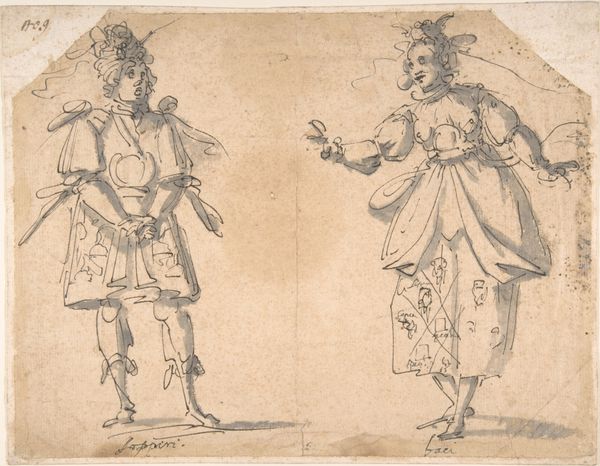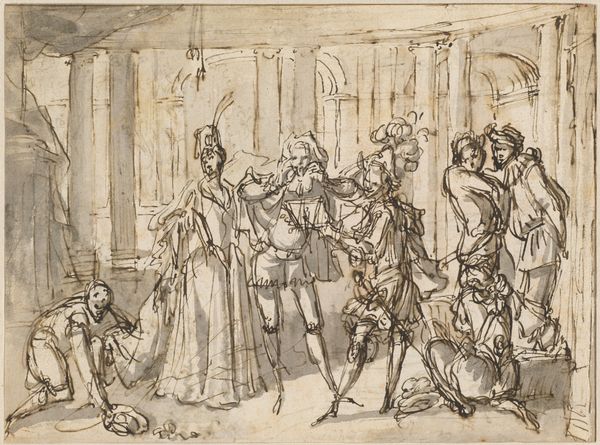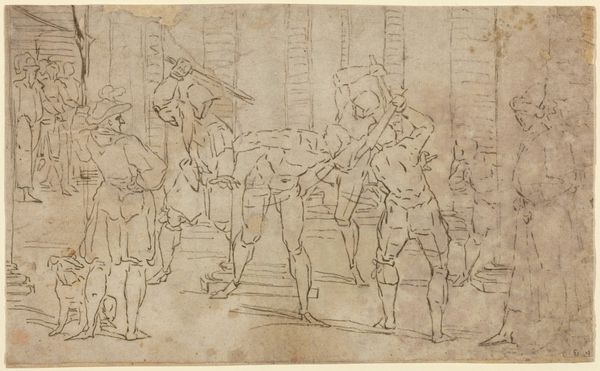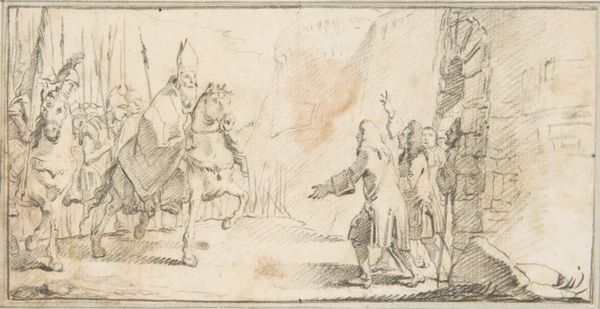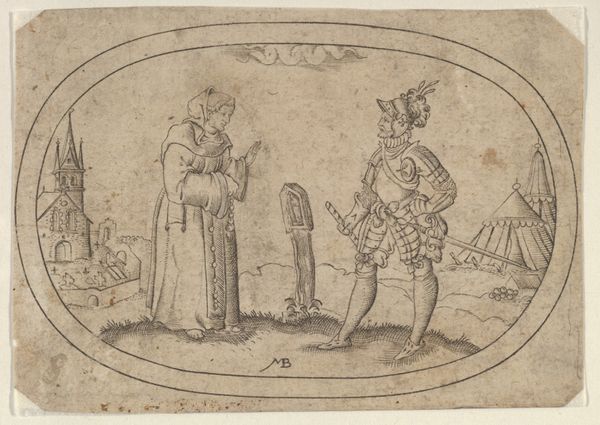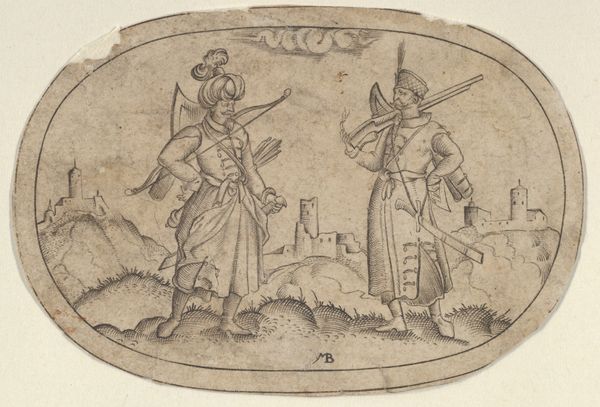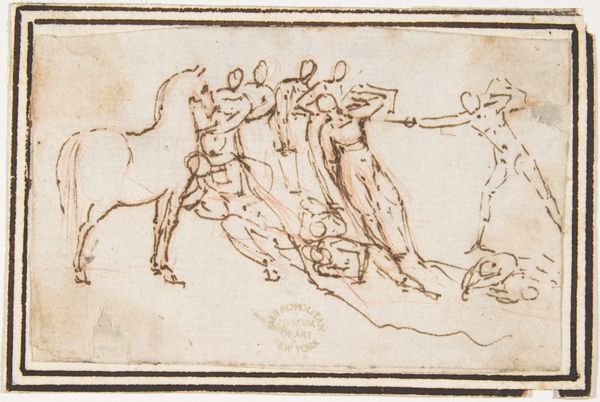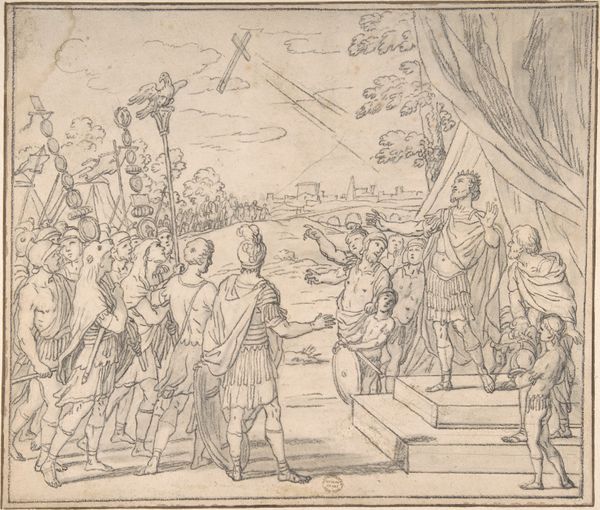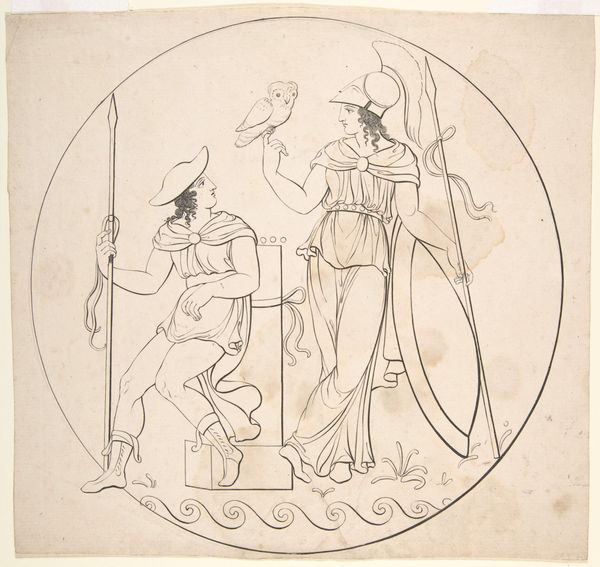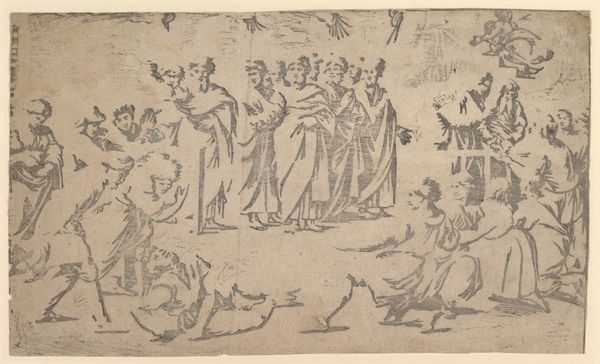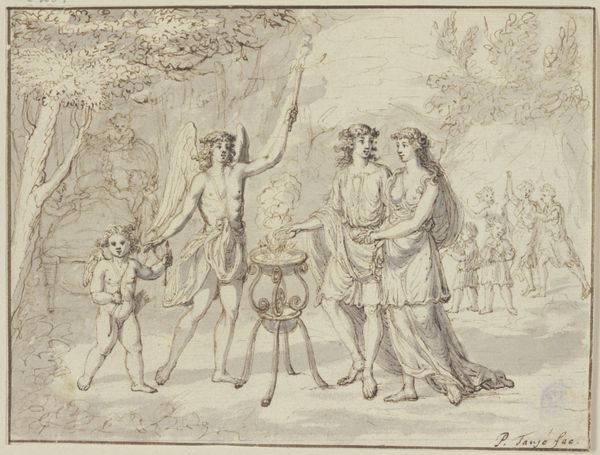
Four Actors in Heroic Costume, with a Study of a Helmeted Head 1711 - 1722
0:00
0:00
drawing, watercolor
#
drawing
#
baroque
#
figuration
#
watercolor
Dimensions: 5 9/16 × 7 7/8 in. (14.2 × 20 cm)
Copyright: Public Domain
Curator: This work, entitled "Four Actors in Heroic Costume, with a Study of a Helmeted Head", dates from around 1711 to 1722 and is attributed to Claude Gillot. It’s currently housed here at the Metropolitan Museum of Art. I am immediately drawn to the delicate line work and washes. What are your initial thoughts? Editor: Well, I'm intrigued by the labor invested here, evident in the detailed depiction of costumes and armor. Look at the various decorative additions to their helmets; one even sports what appears to be a plume or small bird. These additions are telling, given this seems to represent performance. Curator: Absolutely, and if we focus on the composition, the figures are arranged almost like a frieze, creating a sense of theatrical staging. Gillot clearly demonstrates a firm grasp of baroque aesthetics. Editor: But baroque wasn't merely aesthetics; it was a process. Considering this work as preparatory drawing, one begins to imagine the textile sourcing, pattern-making, and skilled seamstress involved in bringing such intricate costume design into being. These characters are certainly a form of performance and labor. Curator: True, the dynamism inherent in baroque art finds an interesting echo when contemplating that material production. Notice how Gillot uses line weight and cross-hatching to convey depth and volume. What strikes me, too, is the contrast in how Gillot has colored their chainmail with hatching versus the solid planes on other clothing. Editor: Indeed, those choices would reflect specific material costs. The accessibility of particular dyes to theatre companies back then would significantly dictate design. And consider the physical implications of these garments, limiting performers’ mobility. Even artistic constraints have material origins. Curator: The elegance and flamboyance capture the sensibility, and I believe the artistry lies in the meticulous detailing and balanced distribution of the figures across the plane, emphasizing their shared, yet distinct identities through ornament. Editor: I'd argue that Gillot's choices reveal an interconnected web of creation – from sourcing pigments to staging theatrical spectacle – which is fascinating when considering the work as evidence of cultural manufacturing and social position during that period. Curator: I think we both walked away with deeper understanding. Thank you for exploring Gillot’s work with me through an intriguing lens. Editor: Thank you. Seeing those players reminds us art manifests both in visual form and labor's presence, an insightful tension worth honoring.
Comments
No comments
Be the first to comment and join the conversation on the ultimate creative platform.
